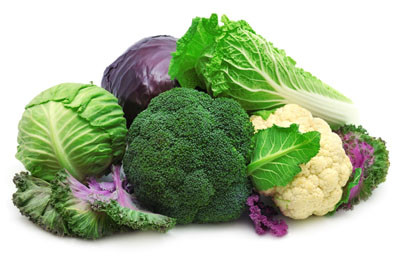
Over a third of Americans suffer chronic pain, relying on prescription pain relief medication to reduce their suffering. 40 million Americans and 350 million people worldwide experience their pain from arthritis, many relying on anti-inflammatory, pain-relieving or other medication to manage their suffering.
Do you suffer pain or restricted mobility from arthritis? Perhaps, like millions of your peers, you take medication to manage your symptoms; or perhaps, you try to avoid artificial chemicals and medications. Either way, what if changes to your diet or certain super-foods could help reduce your suffering?
If you are planning to change your diet, a food diary can be an invaluable tool in monitoring the impacts of removing and adding different ingredients to your diet. Try removing foods known to be bad for arthritis, and swap them for some of the ingredients below. Arthritic people should avoid diets high in salts, sugars, processed food, fat, additives, dairy, alcohol and gluten grains such as wheat.
Contents
Bananas
Bananas are known to be an excellent source of potassium, but they contain other important nutrients in the battle against arthritis. These include folate and vitamins C and B6, which all keep symptoms to a minimum. They are also high in fibre, helping maintain a healthy gut; which ensures your body absorbs all the anti-inflammatory foods.
Beetroot
Like many other brightly coloured fruit, beetroot or ‘beets’ contain high levels of antioxidants. This vegetable’s antioxidants have been shown to reduce inflammation and help protect against other diseases. They also contain betalains and vitamin C, both of which help combat arthritis. Add them to salads, roast them alongside other vegetables or even have them juiced to add their vibrant colour and anti-inflammatory properties to your diet.
Broccoli, cauliflower and cruciferous vegetables

Cruciferous vegetables, such as broccoli and cauliflower, are nature’s arthritis preventative medicine. An 11-year long study at the Mayo Clinic found including these vegetables in your diet helps reduce the chances of developing arthritis or a worsening of symptoms. They also contain lots of important nutrients for a healthy diet, so even if you already suffer from arthritis, they will still help you defend against inflammations.
Cherries
Cherries’ ruby-red hue comes from a chemical compound called anthocyanins. These are a super powerful anti-oxidant capable of a double-pronged approach to pain relief: they help minimise inflamed joints and muscles and, just like aspirin, inhibit the enzymes our brains associate with pain. A study in the Journal of Nutrition showed that people who ate a bowl of cherries for breakfast had reduced the risks of inflammation, and another study showed juiced cherries helped reduce long distance runners’ risk.
Colourful Fruits and Vegetables
We’re not recommending colourful fruit and vegetables because we like their appearance: the brighter a vegetable or fruit’s colour, the high its levels of antioxidants and essential vitamins and minerals. Vitamin C in particular has been shown to combat the signs of arthritis, and can be found in abundance in citrus fruits, leafy greens, red peppers, berries and many other fruits and vegetables. The USDA recommends men should incorporate 90mg of vitamin C into their diet and women 75mg (to take account of their smaller average size).
However, as with all the foods listed here: some people find certain fruits and vegetables antagonise their arthritis: peppers and tomatoes in particular are often found to be culprits. Try introducing new ingredients to your diet gradually, and keep a diet diary to monitor how your diet improves or exacerbates your arthritic symptoms.
Fish and Fish Oil
Fish oil supplements are derived from oily fish; like mackerel, salmon and sardines. The fatty acids they contain are rich in omega-3. This essential fatty acid has been proven to help reduce the risks and symptoms of inflamed joints and arthritis. Ideally, to have the full benefits, you’ll want to be eating fish several times a week – or you could supplement a healthy diet with omega-3 fish oil supplements.
Ginger
Ginger is a root-based spice, typically known in the health-food-world for its stomach-soothing and nausea-healing properties. Like cherries, ginger has similar effects as aspirin: it blocks pain-inducing enzymes and reduces inflammation, helping minimise arthritis and other inflammatory pain and restricted movement. Ginger is commonly used in Asian dishes, but is also a great addition to juices and smoothes; or can be mixed with lemon and hot-water to create a healing tea.
Leafy greens
Leafy greens, like lettuce and kale, contain two soothing naturally occurring chemicals for treating arthritis. Firstly, they contain high levels of fibre, helping reduce levels of inflammation-causing C-reactive proteins. They also contain high levels of Vitamin E, which our bodies can use to help protect themselves against other inflammatory molecules called cytokines.
Low-fat dairy
Dairy products, especially milk, are often a trigger for arthritis sufferers, This is due to the compound casein; a protein found in dairy, that many are mildly allergic to. However, if dairy doesn’t trigger your arthritis, low-fat dairy products to contain some important nutrients. In particular, they contain calcium and Vitamin D to help ensure healthy bones; and some natural yogurts also contain pro-biotics.
Nuts
Like leafy greens, nuts contain high levels of vitamin E – helping protect the body against inflammatory agents. Like fish, they’re also rich in essential fatty-acids; helping to keep our joints oiled and fight inflammation. Finally, all nuts are packed with antioxidants to help repair and stave-off arthritic attacks. Nuts are a great addition to smoothies, or as a between-meal snack.
Olive Oil
Olive oil contains some of the lowest levels of saturated fats for a cooking oil. The fats it contains are complex, aid many of our bodily functions and form part of a balanced diet. Keep an eye out for ‘extra virgin’ olive oil: this oil is from the first pressing of the olives themselves, appears darker in hue and the highest variety of nutrients. Olive oil contains oleic acid:, polyphenols and essential omega-3 fatty acids. These characteristics make olive oil an excellent weapon in the battle against arthritic pain. Try using olive oil instead of butter, vegetable or sunflower oil when cooking.
Soy
Soy, sourced from soya beans and found in Asian cooking and soya milk, has some unusual properties. One of these is due to its isoflavones. These compounds are believed to be highly effective at helping lower inflammation, especially in women due to isoflavones having some shared characteristics with oestrogen.
Tomatoes
Tomatoes are rich in lycopene; a naturally occurring anti-inflammatory shown to help ease arthritic pain. Oddly enough, it’s been found cooked tomatoes contain higher concentrations of lycopene; so try cooking some tomato soups and stews.
Turmeric
Turmeric is a staple spice in Indian cooking and curries. It’s also been used in traditional medicine for centuries. This spice contains curcumin: an anti-inflammatory and naturally occurring chemical compound. A complementary spice to have with cumin is black pepper: the piperine in pepper helps release the curcumin contained in turmeric. As well as incorporating Indian cuisine into your diet; you can also add a little into salad dressings and sprinkle it onto soups, cooked grains, and vegetables. Turmeric supplements are also available; but remember to look for high or pure levels of the active ingredient curcumin (also called curcuminoids).
Whole grains
Whilst it’s important you avoid processed carbohydrates and refined grains, the fibre contained in whole grains helps reduce levels of the C-reactive protein; a proven cause of inflammations. So why not try switching your white pasta or simple cereal for a whole grain alternative?